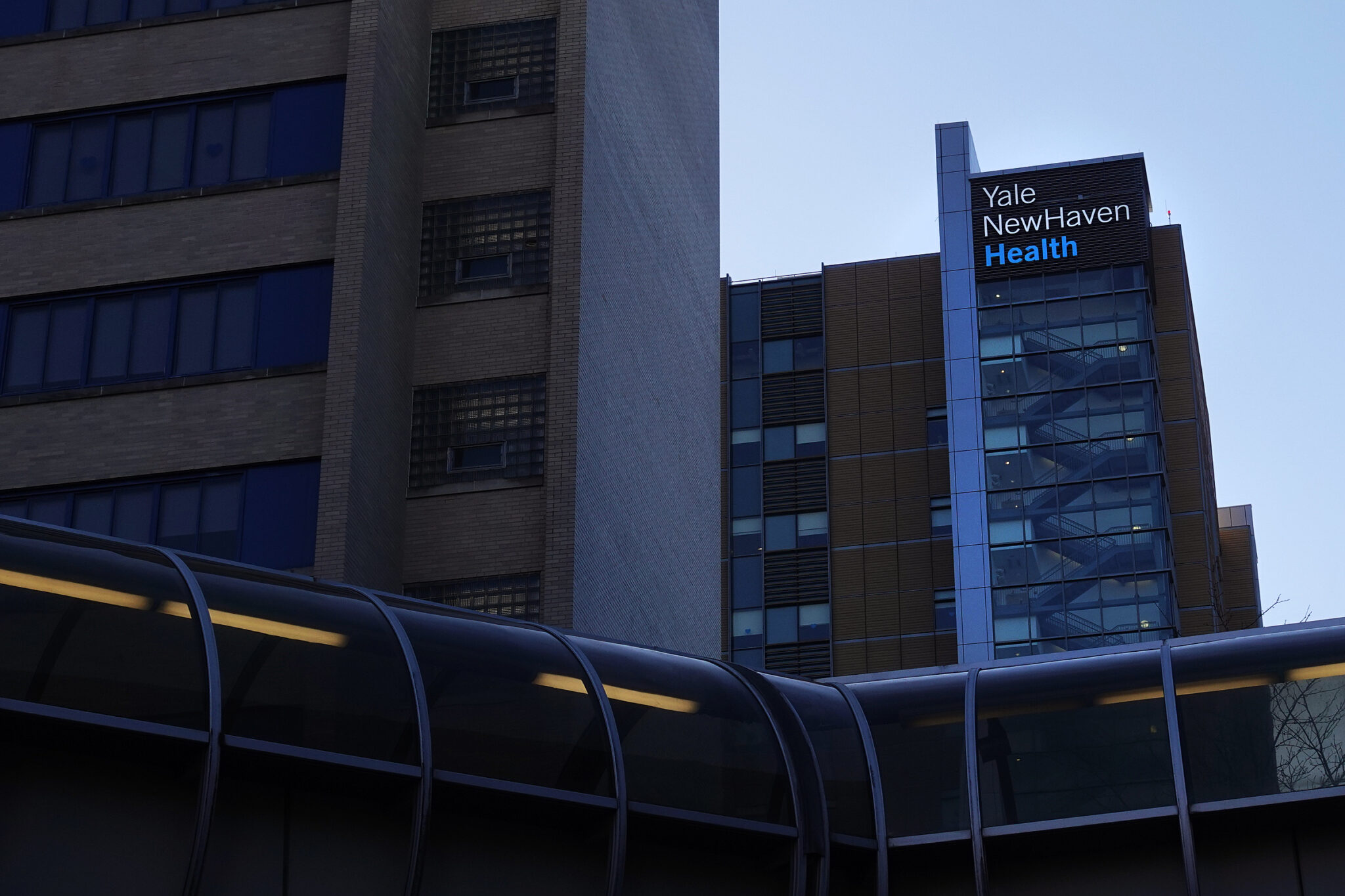YNHH reopens extra unit and adds discharge lounges to reduce overcrowding
As hospitals across the nation face overcrowding issues, the Yale New Haven Hospital is creating a new 35-bed unit space and adding discharge lounges.

Tim Tai, Senior Photographer
In the face of an overwhelmed Emergency Department, the Yale New Haven Hospital has announced additional spaces for patients.
Overcrowding in emergency departments has become a nationwide issue. On March 22, YNHH announced that it was reopening the YNHH ED Annex, a 35-bed unit space to transfer non-acute patients. The hospital also announced the addition of discharge lounges, a Capacity Coordination Center and a Home Hospital Program to address the increase in demand.
“When hospitals are full, it becomes really difficult to access care for the next car crash, the next heart attack or the next stroke,” Arjun Venkatesh, the chair of the Emergency Medicine Department at YNHH, told the News.
When a new patient is admitted to an overcrowded ED, Venkatesh said, they often have to wait for hours. Sometimes patients even end up in the hallways, according to Venkatesh.
Venkatesh stressed that a lack of space and resources ultimately compromises the safety of the patients and offers them worse care.
The impact of overcrowding goes beyond patients, other experts told the News.
Matthew Morrison, a lecturer in the Humanities department and an Emergency Medicine physician at the Bronx-Lebanon Hospital Center in New York, said that hospitals like YNHH need not only beds but healthcare workers, too. He said that his hospital recently added an observation space, or OB, to help accommodate the influx of patients. However, for Morrison, the use of OBs is not enough. Hospitals need more human resources. Morrison said.
“If the nurses that are supposed to be in the ER are also caring for the OB patients, that can be really strenuous on them,” Morrison said. “You have to provide extra money for the staffing to take care of patients in a dedicated way.”
Both Venkatesh and Morrison said that overcrowded hospitals lead to negative experiences for both the patient and the clinician. Venkatesh said that this also contributes to clinician burnout.
Experts the News spoke with emphasized how hospital overcrowding extends to health equity concerns as well.
According to Howard Forman, a professor of health economics at the School of Medicine, who worked in an ER for 28 years, when the healthcare system becomes overwhelmed, patients often have to wait for hours in the emergency room before receiving care. One study published by Yale researchers last summer revealed that richer, whiter and English-speaking individuals often jump the line and receive faster care than others.
“I get up — or maybe I’m accompanied by somebody who’s my advocate — and say to the person at the desk, ‘My mother, my father, my daughter, my child is really suffering right now, is there anything we can do?’” Forman said. “As far as we can tell, they move up the queue.”
While YNHH and other hospitals are trying to reduce the harms and risks of overcrowding, the problem occurs on a more macro-level, Venkatesh said.
“[ED overcrowding is] a very lagging symptom,” Venkatesh said. “It’s the last thing you observe when the healthcare system is broken in a million different ways.”
Forman attributed this problem to the healthcare system’s reliance on emergency departments, which he said have become the “de facto multi-specialty clinic[s] of the 21st century.”
Forman noted that it makes sense for a patient to go to an emergency room when they want rapid treatment.
“A person who notices weight loss can go to the emergency room, get a CAT scan, see an oncologist, and be scheduled for chemotherapy or surgery within a week,” Forman said. “If you were to go and wait to see your own internist [it could] take months.”
Under this system, when patients need care, instead of waiting weeks to speak with their internist, they go to the emergency department. Patients who go to YNHH often have access to few alternative clinics to receive care, Venkatesh said.
With an aging population, Ventakesh noted, this system has increasingly come under strain. This has even been the case at YNHH, which Venkatesh said employs more staff than many other peer institutions.
“The reality is, our population is aging,” Venkatesh said. “The advent of numerous technologies means that people live longer with much more complex healthcare needs, and we need access to ED visits and hospitalizations. And we just never kept pace by building the number of hospital beds or hospital resources to take care of that aging population.”
Thus, the band-aid solutions hospitals are implementing do not fully solve the problem, Forman claimed.
To truly improve access, Venkatesh and Forman said, the entire system must change. This includes increasing capacity and resources in nursing homes, improving access for undocumented immigrants and people with chronic illnesses and providing low-cost, acute care settings, Venkatesh said.
“If we did all of these things at the same time, I think this is a very solvable problem,” Venkatesh said. “But we can’t just do them.”
The Yale New Haven Hospital is a Level 1 Adult and Pediatric Trauma Facility.







